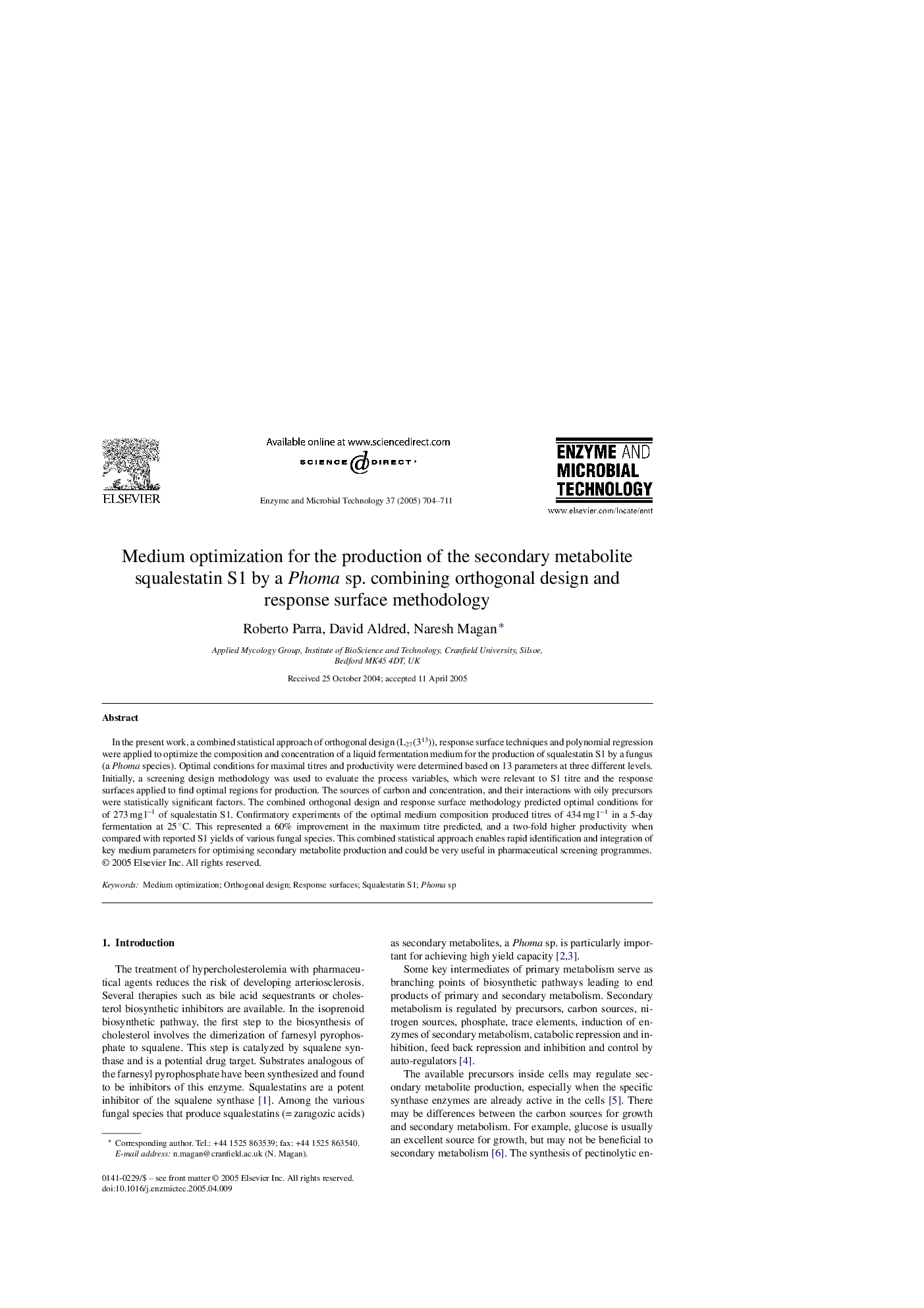| Article ID | Journal | Published Year | Pages | File Type |
|---|---|---|---|---|
| 10233345 | Enzyme and Microbial Technology | 2005 | 8 Pages |
Abstract
In the present work, a combined statistical approach of orthogonal design (L27(313)), response surface techniques and polynomial regression were applied to optimize the composition and concentration of a liquid fermentation medium for the production of squalestatin S1 by a fungus (a Phoma species). Optimal conditions for maximal titres and productivity were determined based on 13 parameters at three different levels. Initially, a screening design methodology was used to evaluate the process variables, which were relevant to S1 titre and the response surfaces applied to find optimal regions for production. The sources of carbon and concentration, and their interactions with oily precursors were statistically significant factors. The combined orthogonal design and response surface methodology predicted optimal conditions for of 273 mg lâ1 of squalestatin S1. Confirmatory experiments of the optimal medium composition produced titres of 434 mg lâ1 in a 5-day fermentation at 25 °C. This represented a 60% improvement in the maximum titre predicted, and a two-fold higher productivity when compared with reported S1 yields of various fungal species. This combined statistical approach enables rapid identification and integration of key medium parameters for optimising secondary metabolite production and could be very useful in pharmaceutical screening programmes.
Related Topics
Physical Sciences and Engineering
Chemical Engineering
Bioengineering
Authors
Roberto Parra, David Aldred, Naresh Magan,
